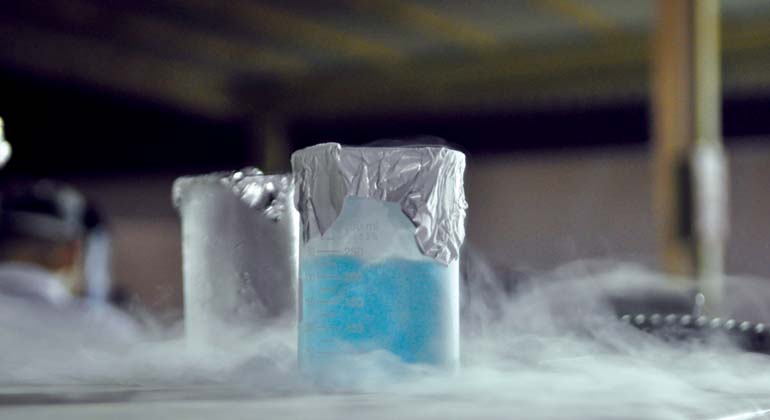
Oxygen Liquid
Oxygen is the second largest component of the atmosphere, comprising 20.8% by volume. Liquid oxygen is pale blue and extremely cold. Although nonflammable, oxygen is a strong oxidizer. Oxygen is necessary to support life. Oxygen will react with nearly all organic materials and metals usually forming an oxide. Materials that burn in air will burn more vigorously in oxygen. Equipment used in oxygen service must meet stringent cleaning requirements and systems must be constructed of materials that have high ignition temperatures and that are non-reactive with oxygen under the service conditions. Vessels should be manufactured to American Society of Mechanical Engineers (ASME) codes and designed to withstand the process temperatures and pressures.
Liquid oxygen is a cryogenic liquid. Cryogenic liquids are liquefied gases that have a normal boiling point below -238°F (-150°C). Liquid oxygen has a boiling point of -297.3°F (-183.0°C). Because the temperature difference between the product and the surrounding environment is substantial—even in the winter—keeping liquid oxygen insulated from the surrounding heat is essential. The product also requires special equipment for handling and storage. Oxygen is often stored as a liquid, although it is used primarily as a gas. Liquid storage is less bulky and less costly than the equivalent capacity of high-pressure gaseous storage.
A typical storage system consists of a cryogenic storage tank, one or more vaporizers, a pressure control system, and all piping necessary for the fill, vaporization, and supply functions. The cryogenic tank is constructed, in principle, like a thermos bottle. There is an inner vessel surrounded by an outer vessel. Between the vessels is an annular space that contains an insulating medium, from which all the air has been removed. This space keeps heat away from the liquid oxygen held in the inner vessel. Vaporizers convert the liquid oxygen into a gaseous state. A pressure control manifold then controls the gas pressure that is fed to the process or application. Vessels used in liquid oxygen service should be designed according to ASME codes for the pressure and temperatures involved. Piping design should follow similar codes, as issued by the American National Standards Institute (ANSI).

